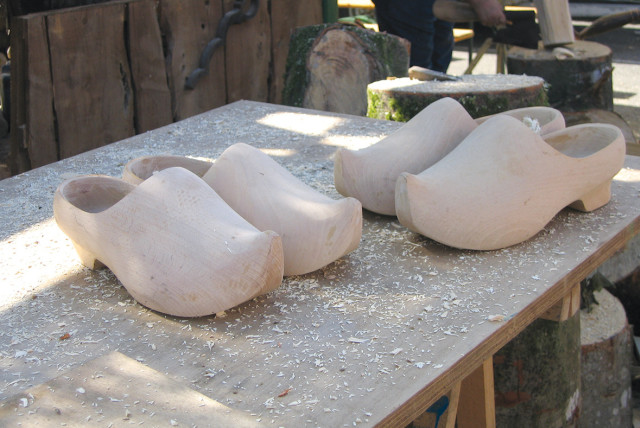Sartorial expressions: Where phrases about clothes come from

Let’s take a look at some of the terms and traditions associated with attire and see what we can uncover about clothes.
The statement “Clothes make the man” dates as far back as the 8th century BCE, when Homer used the expression in his epic poem The Odyssey. In today’s parlance, it would be more PC to say “Clothes make the person.”
In any event, over the millennia many expressions and customs have evolved that are related to clothing.
So let’s take a look at some of the terms and traditions associated with attire and see what we can disclose about clothes.
History of clothing-inspired terms
Taking it from the top, we’ll start with the top hat. The first silk top hat in England is credited to George Dunnage, a hatter from Middlesex, in 1793. Its first rise to prominence is attributed to John Hetherington, an English haberdasher who allegedly caused a riot in London in 1797 when he wore a top hat in public. Legend has it that women fainted, children screamed, and dogs yelped at the sight of the silk top hat, “which had a shiny lustre and was calculated to frighten timid people.”
In its time, a lot less controversial and a lot more practical was the Panama hat. The woven hat actually originated in Ecuador, the only place in the world that has such a long-standing weaving tradition. The construction workers building the Panama Canal (1903–1914) wore the Ecuadorian hats as protection from the harsh sun. The name “Panama hat” was introduced in 1906 when photos of president Theodore Roosevelt wearing the hat were published in the press when he was overseeing the construction of the canal.
Another hat that serves as protection is the sombrero. That hat dates back to 15th-century Spain. The name is derived from the Spanish word sombra, which means “shade.” At that time, the Mestizo cowboys in central Mexico adopted the sombrero as well. Most sombreros have a wide enough brim to provide shade not only to the head and neck but also the shoulders. The sombrero was adapted by Mariachi musicians as part of their costumes. Their outfits, adorned with elaborate embroidery, beading, and gold threads, are complemented by equally stunning sombreros. The wide-brimmed hats also play center stage in the traditional Mexican hat dance. The dance represents the courtship of a man and a woman, with the woman first rejecting the man’s advances, then eventually accepting them. According to the folk tale upon which the dance is based, a poor peasant was in love with a beautiful maiden and threw his prized sombrero on the ground in offering. She accepted him by dancing on the brim of his hat.
While it may seen rude to dance on the brim of someone’s prized possession, the custom of tipping one’s hat is a sign of courtesy. That tradition dates back to the Middle Ages when knights would remove their helmets to identify themselves, as well as to show respect.
In that vein, the phrase “hats off” is used to express admiration or approval. The French use the word chapeau, which means “hat.” So when the French say “Chapeau,” they are verbally doffing their hats and implying “Kudos” or “Kol hakavod.”
In literature, The Hatter is a character in Lewis Carroll’s novels Alice’s Adventures in Wonderland (1865) and Through the Looking-Glass (1871). The fictional figure is often referred to as The Mad Hatter, although the author never used that term. But in fact, during the 19th century many milliners did indeed go mad. Mercury was used in the manufacturing of felt hats, causing a high rate of mercury poisoning among those working in the hat industry. It caused neurological damage, which included slurred speech, memory loss, and tremors, which led to the phrase “mad as a hatter.”
While men may take their hat off to show respect, many a hothead is advised to “Keep your shirt on.” The message here is “Stay calm. Don’t lose your temper.” The expression was first used in America in the mid-1800s. In those days, most men owned only one or two shirts. So before taking part in a physica altercation, a man would take his shirt off to keep it from being ruined or soiled.
In regard to men’s shirts and women’s blouses, shirts are buttoned on the right, while blouses are buttoned on the left. Why is that? The common reason cited for women’s buttons on the left is that middle- and upper-class women usually had maids to help them get into and out of their elaborate outfits. So dressmakers sewed the buttons onto the left side of women’s garments to make it easier for right-handed maids to fasten them. As for men’s shirts, one theory is because soldiers often drew their weapons with their right hand, buttons on the right side made it easier to adjust and unbutton their shirts or jackets with their free left hand.
At the bottom of some men’s shirt sleeves is the French cuff. It is a double length cuff that is stitched on separately and then doubled back on itself, with holes that are fastened together with cufflinks. The purpose was that when the shirt was worn for several days, the soiled part of the cuff could be turned under a bit and not seen. This style of shirt cuff, which originated in England, took on the name “French cuff” when it reached America. In the 1930s, cufflinks became extremely popular as a form of status symbol and fashion accessory, as well as a practical fastener.
Speaking of fastening, the history of men’s neckties has a rather fascinating history that is traced back to the 17th century. At that time, Croatian soldiers serving in the French army wore small knotted neckerchiefs as part of their uniform. The French were so impressed by their neckwear that they began to adopt it themselves, calling it a cravat, which is derived from the French word for “Croat.” In the 18th century, neckties became a fashionable accessory among the French upper class. The trend quickly spread throughout Europe, and soon men from all walks of life were wearing cravats. In the 19th century, the necktie as we know it today began to emerge. By the early 20th century, ties became an essential part of business attire.
Another essential part of attire are trousers, or pants. The expression “to wear the pants” in a relationship means to be the person who is in charge. The reason the person in charge is portrayed as wearing pants is that in the 1800s, society was patriarchal. Men were considered to be the heads of their households, and only men wore pants at that time. Today, of course, both men and women can wear pants, but the idiom has survived to describe the dominant person in a relationship.
The expression “to fly by the seat of your pants” means to use your instincts to tell you what to do in a new or difficult situation rather than following a plan or relying on equipment. The phrase originated in the early days of aviation. Before aircraft had instruments, pilots had to rely on their innate sense of balance to detect changes in movements of the plane, transferred to his body by his contact with the seat. When the pilot couldn’t see the ground, the only thing to guide him was the sensation of gravity pulling his bottom against the seat of the cockpit.
In such a situation, one could certainly say “I wouldn’t want to be in his shoes.” In the context of footwear, the expression “the shoe is on the other foot” has an interesting connotation. It means that a situation has been reversed so that the person who was in the better position before is now in a worse one. The term first appeared in the mid-1800s as “the boot is on the other leg.” In a literal sense, wearing the right shoe on the left foot would be quite uncomfortable, so the idiom suggests that changing places is not equally beneficial to both parties.
And while we’ve got the boot on the other leg, the word “bootleg” is an adjective that describes something that is sold illegally. The term originates from the practice of smuggling illicit items in the legs of tall boots, particularly the smuggling of alcohol during the Prohibition era in the US (1920 to 1933). Over time, the term “bootleg” has come to refer to any illegal or illicit product.
Another illicit activity that has its footing in footwear is sabotage. To commit sabotage is to damage or destroy equipment, weapons, or buildings in order to prevent the success of an enemy or a competitor. The activity dates back to 1700s France when striking weavers threw their wooden shoes, called sabots, into the looms to destroy them.
So there you have it. A little sartorial survey from head to toe. In sum, no matter what outfit or ensemble or glad rags you choose to sport, may you always be dressed for success.■
Jerusalem Post Store
`; document.getElementById("linkPremium").innerHTML = cont; var divWithLink = document.getElementById("premium-link"); if (divWithLink !== null && divWithLink !== 'undefined') { divWithLink.style.border = "solid 1px #cb0f3e"; divWithLink.style.textAlign = "center"; divWithLink.style.marginBottom = "15px"; divWithLink.style.marginTop = "15px"; divWithLink.style.width = "100%"; divWithLink.style.backgroundColor = "#122952"; divWithLink.style.color = "#ffffff"; divWithLink.style.lineHeight = "1.5"; } } (function (v, i) { });

